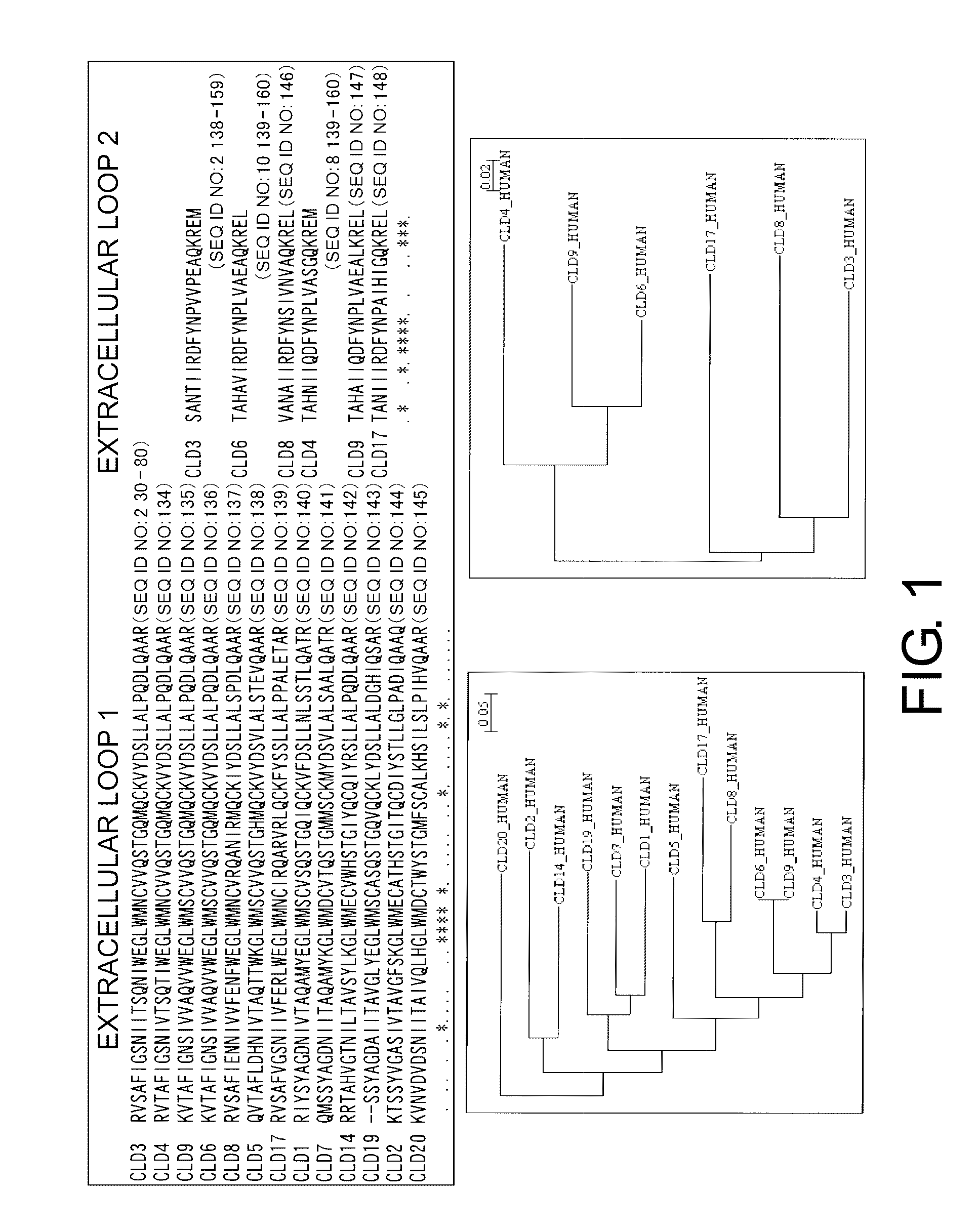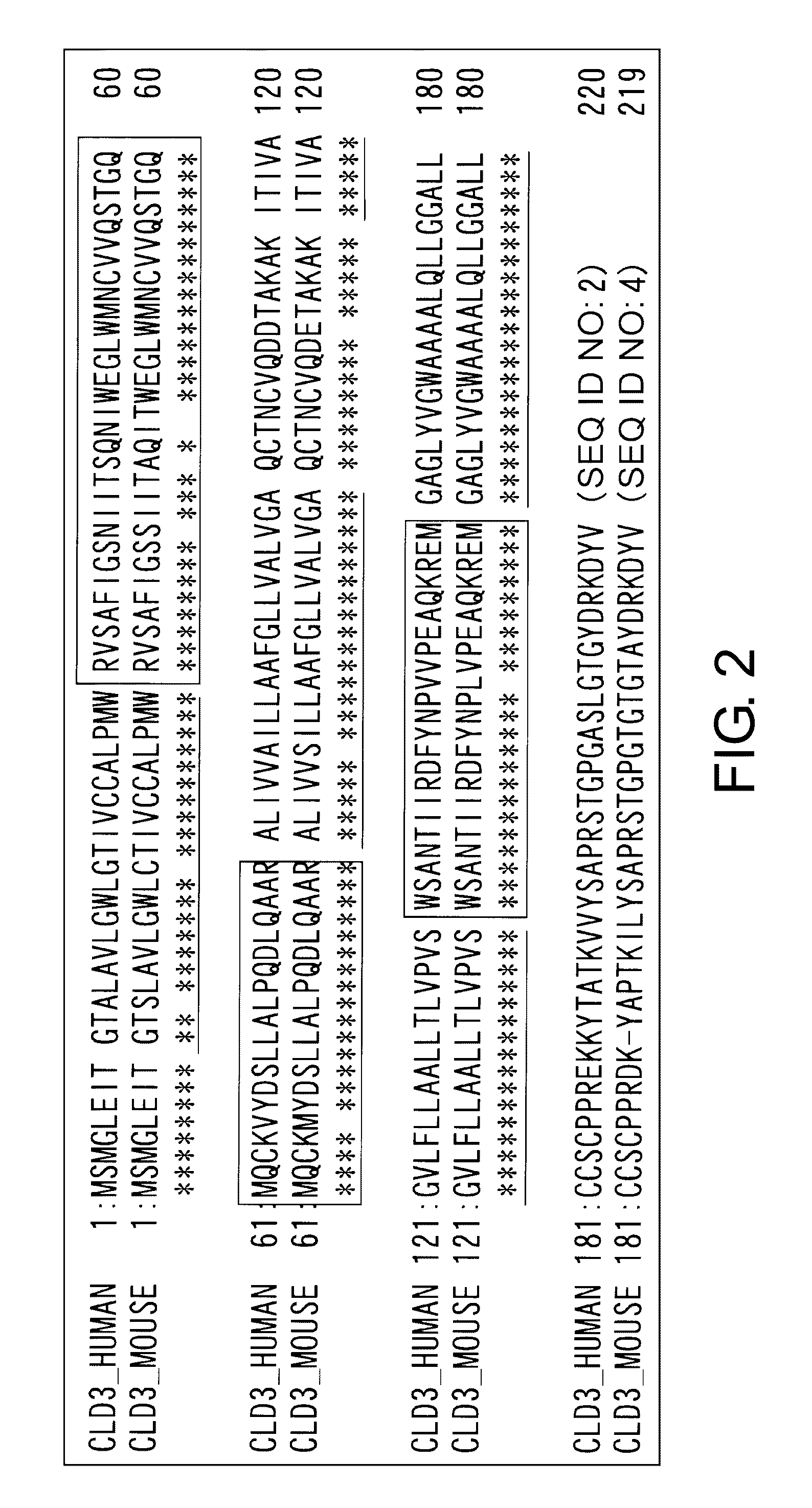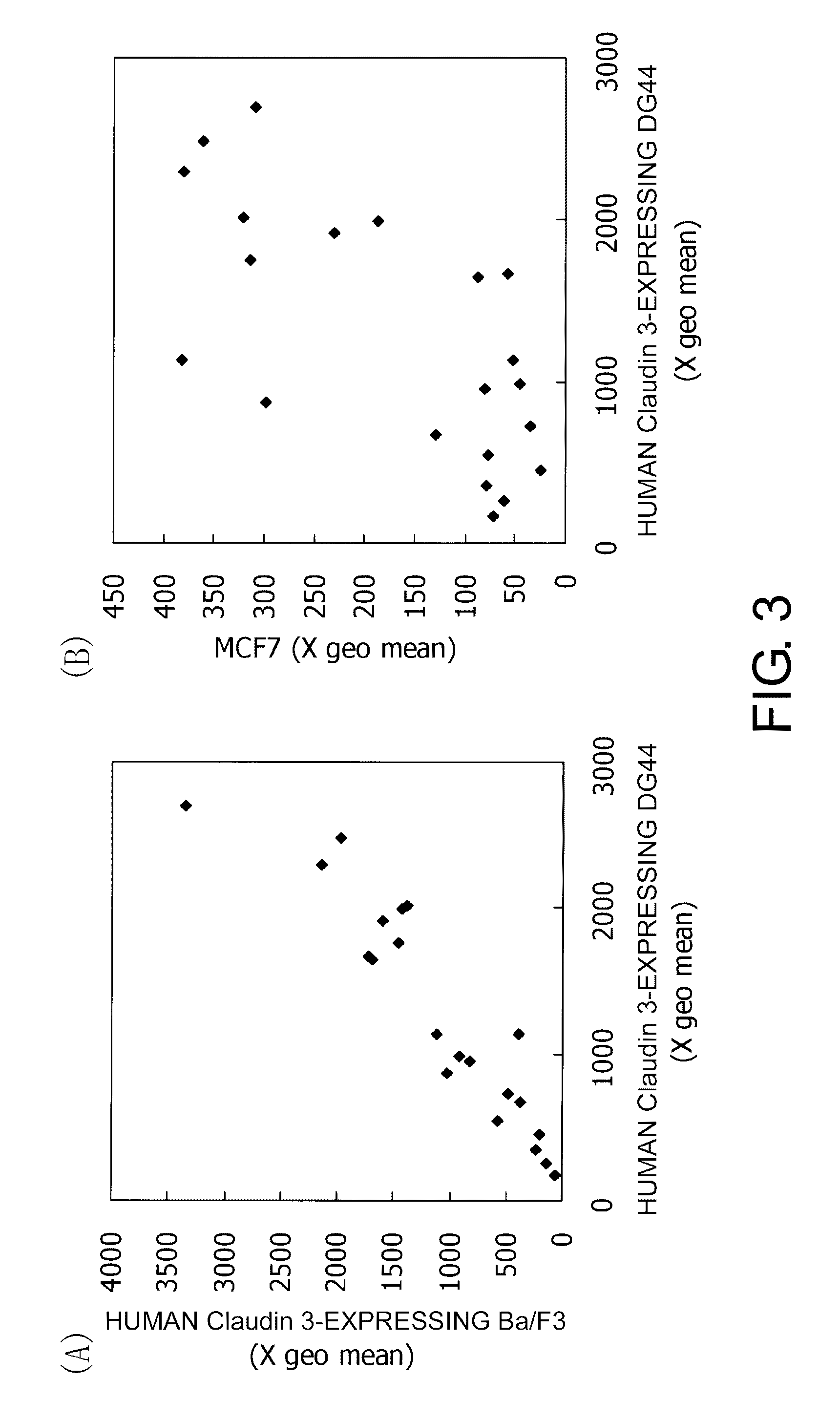Anti-Claudin 3 Monoclonal Antibody and Treatment and Diagnosis of Cancer Using the Same
a monoclonal antibody and anti-claudin technology, applied in the field of cancer diagnosis and treatment, cell proliferation suppression and anticancer agents, can solve the problems of limited antibody application to cancer types, limited application of antibody therapy to cancer types, and inability to achieve clinical application. to achieve the effect of suppressing cell proliferation and elevated expression of claudin 3
- Summary
- Abstract
- Description
- Claims
- Application Information
AI Technical Summary
Benefits of technology
Problems solved by technology
Method used
Image
Examples
example 1
Gene Cloning and Production of Forced Expression Cells
[0274]The genes encoding human Claudin 3, Claudin 1, Claudin 4, Claudin 6, and mouse Claudin 3 were cloned, their mammalian cell expression vectors were constructed, and their forced expression cells were established. PCR primers were designed based on the respective GenBank reference sequences, and PCR amplification of the respective genes was performed using gene-expressing tissue cDNA libraries as template, and the genes of interest were isolated. Sequences of the obtained genes were confirmed by DNA sequencing analysis. The primers and cDNA libraries (Marathon cDNA libraries from Clonetech) used for the gene cloning are shown in Table 1.
TABLE 1GenBankcDNA libraryGene namereferencefor geneCloningCloningSpecies(SEQ ID NO:)Abbreviationsequence IDcloningprimer 1primer 2Humanclaudin 3hCLDN3NM_001303Human kidney5′-CGGCCACCATGTCCATG5′-GTCTGTCCCTTAGACGT(SEQ ID NO: 1)GGCCTGGAGATCA-3′AGTCCTTGCGGTC-3′(SEQ ID NO: 119)(SEQ ID NO: 120)Huma...
example 2
Establishment of Anti-Claudin 3 Monoclonal Antibody Hybridomas
[0277]Mice were immunized by the DNA immunization method using the Helios gene gun system (Bio-Rad) to establish hybridomas producing anti-Claudin 3 monoclonal antibodies.
[0278]The expression vectors used for DNA immunization were constructed as follows. A cDNA of human Claudin 3 was amplified by PCR from a kidney cDNA library (Clontech). The PCR was conducted by using an LA Taq DNA polymerase reaction solution (Takara) with the cDNA amplification primers, cloning primer 1 and cloning primer 2 (shown in Table 1). The amplified cDNA fragments were cloned into the pGEM-T Easy vector, and the nucleotide sequences were determined. A cDNA fragment containing Claudin 3 was excised using EcoRI, and this fragment was inserted into the EcoRI site of pMC, which is a mammalian expression vector, to obtain an expression vector (full-length human Claudin 3 expression vector) for DNA immunization. The nucleotide sequence of the full-le...
example 3
Analysis of the Binding Specificity of the Monoclonal Antibodies
[0286]24 Claudin family genes are present on the human chromosome. Claudin 4 is highly homologous to Claudin 3 in the full-length amino acid sequence. To characterize the redundancy and specificity of cell surface epitopes recognized by monoclonal antibodies, a sequence alignment and clustering diagrams of the putative extracellular sequences of Claudin 3 and the corresponding sequences of highly homologous family molecules were depicted (FIG. 1). The family molecule showing the highest identity in the extracellular loop 1 is Claudin 4 (48 residues out of 51 residues are identical). In the second place, Claudin 6 and Claudin 9 have a high identity to Claudin 3 (41 residues out of 51 residues are identical). Compared to the extracellular loop 1 region, the sequences in the extracellular loop 2 region is not conserved (15 residues out of 22 residues are identical between Claudin 6 and Claudin 8). Conservation between the ...
PUM
| Property | Measurement | Unit |
|---|---|---|
| Force | aaaaa | aaaaa |
| Electric charge | aaaaa | aaaaa |
| Capacitance | aaaaa | aaaaa |
Abstract
Description
Claims
Application Information
 Login to View More
Login to View More - R&D
- Intellectual Property
- Life Sciences
- Materials
- Tech Scout
- Unparalleled Data Quality
- Higher Quality Content
- 60% Fewer Hallucinations
Browse by: Latest US Patents, China's latest patents, Technical Efficacy Thesaurus, Application Domain, Technology Topic, Popular Technical Reports.
© 2025 PatSnap. All rights reserved.Legal|Privacy policy|Modern Slavery Act Transparency Statement|Sitemap|About US| Contact US: help@patsnap.com



